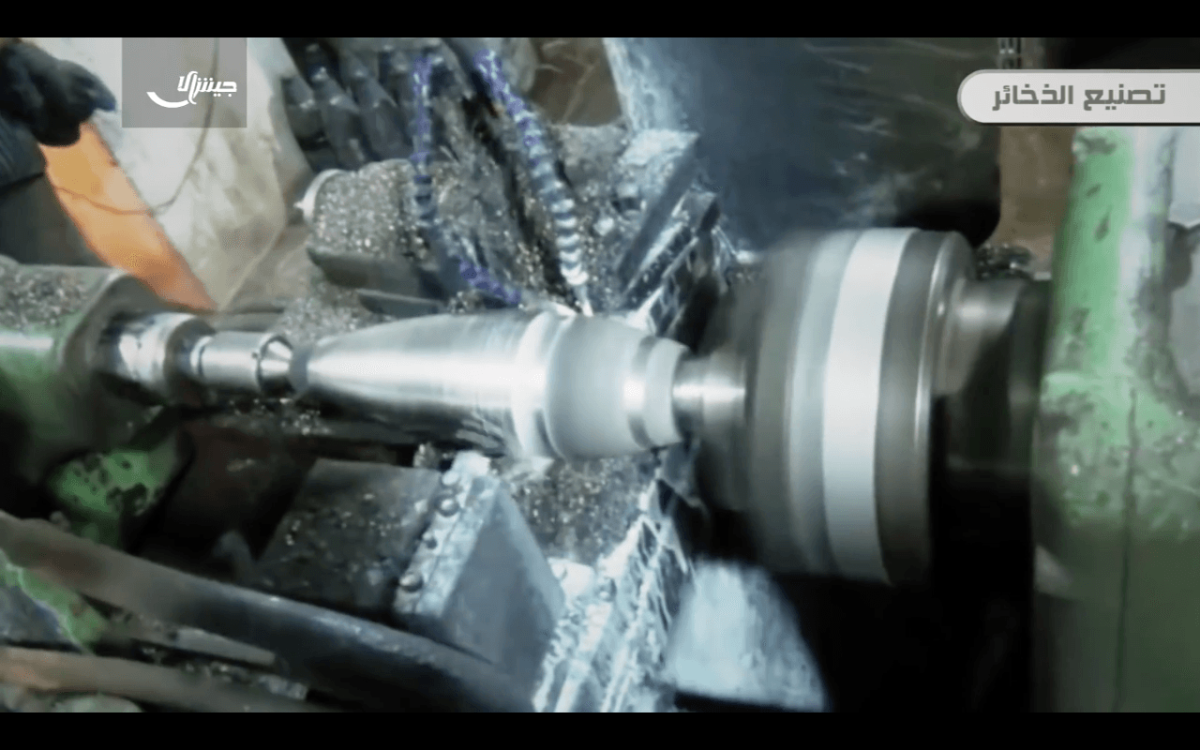Hide and Seek, the Story of Jaish al-Islam's 9K33 Osa SAMs
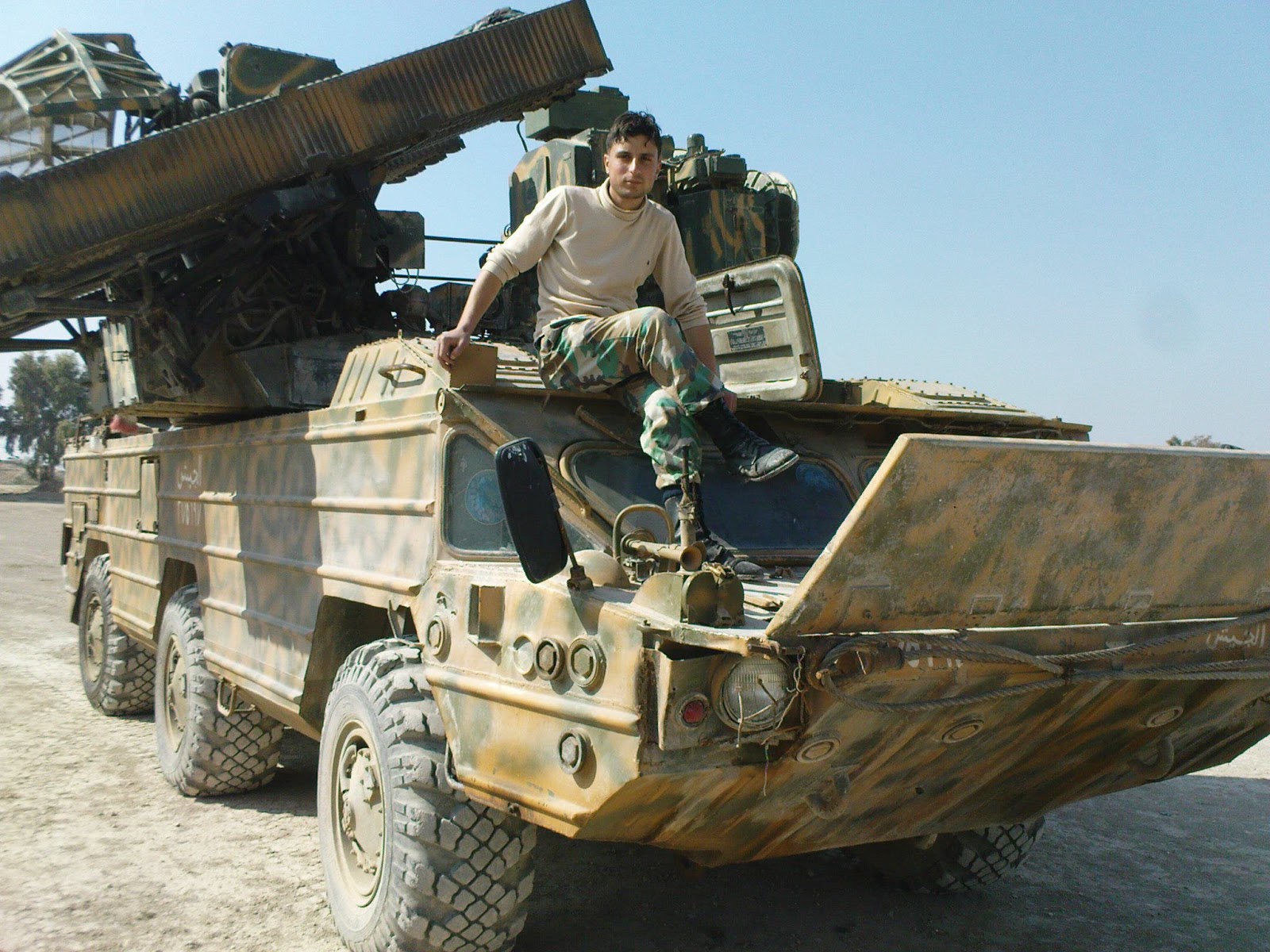
Jaish al-Islam has once again deployed one if its 9K33 Osa mobile surface-to-air missile (SAM) systems in an effort to shoot down a Syrian Arab Air Force (SyAAF) helicopter flying over Eastern Ghouta, Damascus on the 26th of June 2016. Although Jaish al-Islam quickly announced it had successfully shot down the helicopter with a single 9M33 missile, the damaged Mi-25 managed to return safely to Damascus International Airport. In the following days, the SyAAF lost several aircraft flying over or near Jaish al-Islam held territory, once again putting the spotlight on Jaish al-Islam’s 9K33 Osa.
The latest deployment of this system came as a surprise to many as Jaish al-Islam was previously thought to have run out of missiles for the 9K33 Osa, with the Russian Ministry of Defence claiming it had successfully destroyed a 9K33 Osa system operated by the ”Islamic State terrorist group in Eastern Douma” on the 15th of October 2015 and again on the 30th of December 2015. Although the results of these strikes, or if they were ever executed in the first place, remain unknown, the reports gave the false impression that the threat to the Syrian Arab Air Force’s assets flying over Eastern Ghouta was effectively neutralised.
Namely, while Jaish al-Islam is often credited for capturing one 9K33 Osa in Eastern Ghouta on the 6th of October 2012, opposition fighters in Eastern Ghouta had in fact captured no less than five 9K33 Osas in less than two months. Of these five systems, three were captured in operational condition, while two inoperational examples were encountered at a Syrian Arab Air Defense Force (SyAADF) maintenance and storage complex. The lack of information on the actual number of 9K33s captured and operated by Jaish al-Islam once again shows the importance of accurate intelligence gathering in conflict zones around the world.
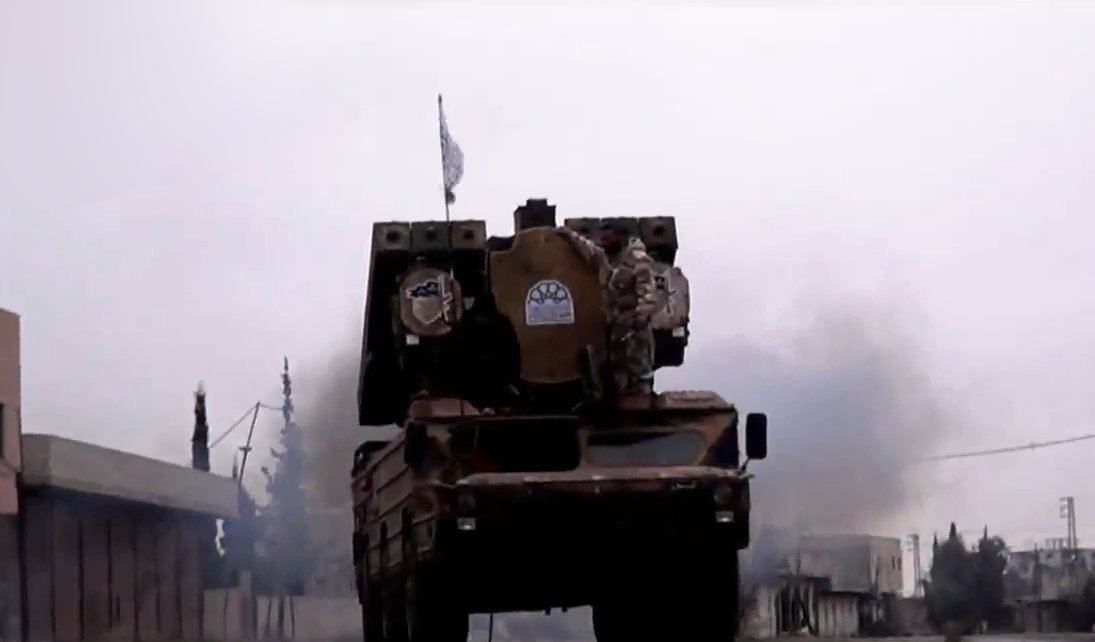
Although the month of October 2012 saw opposition fighters capturing several surface-to-air missiles sites, radar systems and associated equipment in Eastern Ghouta, most of this equipment consisted of ageing Soviet-era systems that had been abandoned for some months. Apart from a limited number of ZSU-23-4s, trucks and command vehicles, this equipment proved to be largely useless for the rebels. The capture of three operational 9K33 Osa mobile SAMs would later have huge complications for the SyAAF however, and the decision not to immediately strike these systems after their capture was nothing short of a major blunder.
While fighters opposed to the regime of President Bashar al-Assad have captured surface-to-air missiles before, much of the often derelict equipment captured proved too complicated to use. The highly-mobile 9K33 Osa is an easier system to master however, aided by the availability of digital simulators that can be downloaded on the internet. Perhaps more importantly, because the radar is directly integrated into the launch vehicle the system is far more convenient in its use for rebel forces, and is capable of relocating and hiding quickly in order to avoid being targeted by airstrikes. Yet it was the fact that these systems were captured by Jaish al-Islam (then Liwa al-Islam) specifically that eventually resulted in the first operational rebel SAM systems in Syria.
Although nowadays completely overshadowed by those of the Islamic State, Jaish al-Islam feats during the course of the Civil War have been nothing short of spectacular. It was the first faction to operate its armour and infantry in a mechanized force opposed to the poor coordination between the two seen with other forces. In late 2013, Jaish al-Islam even established its own air force based at Kshesh airbase. While none of its L-39s ever flew operational sorties, it proved what Jaish al-Islam was capable of. Just shy of two years later, Jaish al-Islam would pull off another first for the rebels by launching an Iranian Zelzal-2 unguided artillery rocket from Eastern Qalamoun in September 2015. The rocket, dubbed ”Maysalun” in Syria, was supposedly aimed at civilian centers in Syria’s coastal region. The results of this underreported attack, which was likely intended as a retaliation for airstrikes conducted by the SyAAF on Eastern Ghouta, are unknown, but Jaish al-Islam remains the sole rebel party have executed an attack with such a weapon.
Given its feats, funding from abroad and its strong leadership under the late Zahran Alloush, Jaish al-Islam was the designated faction to operate the captured 9K33 Osas. Indeed, in the following months after their capture, Jaish al-Islam was already preparing to utilize the systems against Syrian Arab Air Force assets flying over Eastern Ghouta.
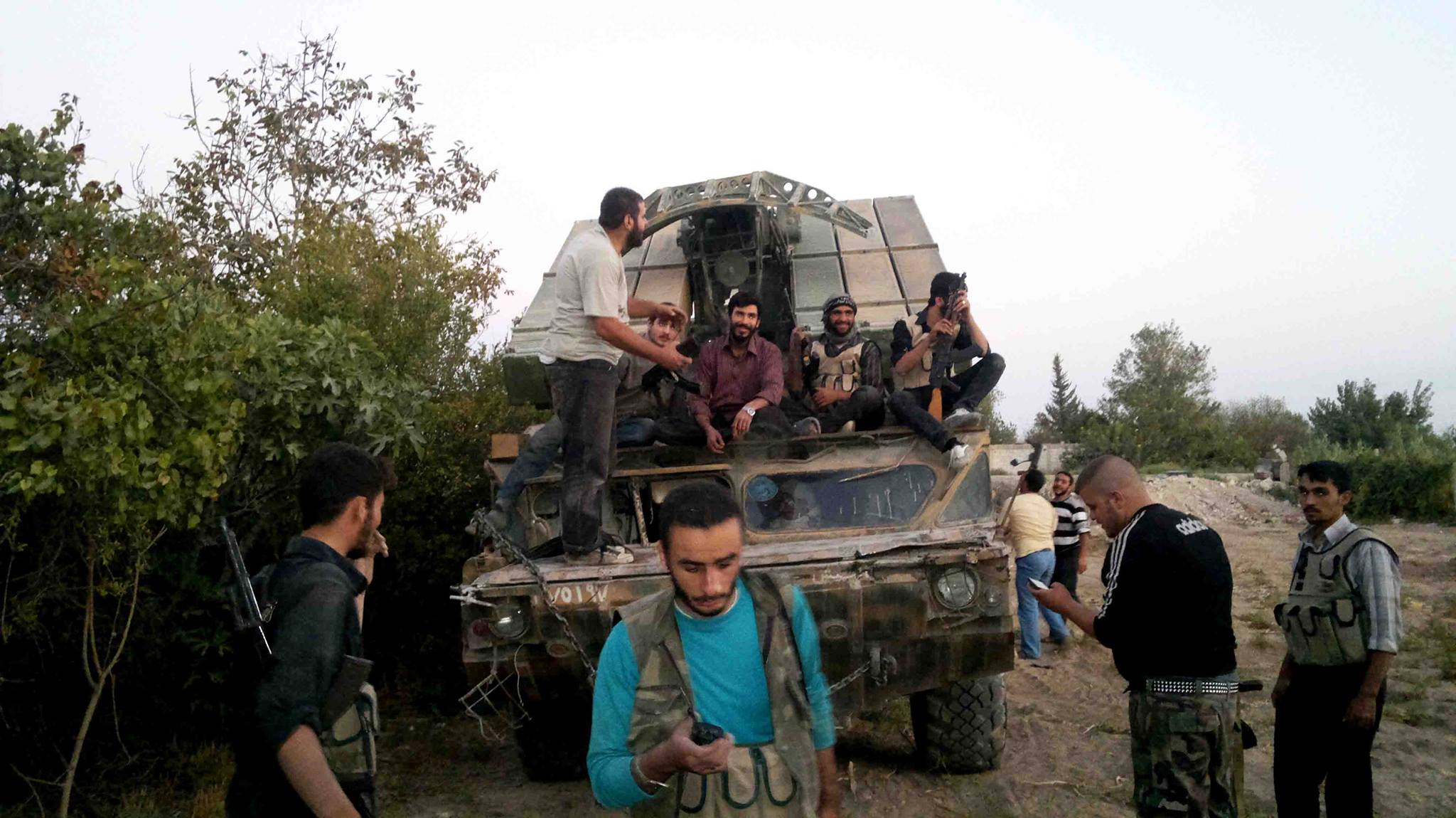
The 9K33 Osa was originally developed during the 1960s with the aim of creating a system that could provide air cover for advancing armoured units operating on the plains of Europe. But contrary to previous designs, the 9K33 incorporated both the launching system and the radar in one vehicle, meaning the transporter erector launcher and radar (TELAR) can independently operate without having to rely on other (radar) systems. Despite this, linkage to long-range radar systems greatly improves the system’s situational awareness and combat capability. A TELAR consists of the 9A33B launching platform on a BAZ-5937 chassis and six 9M33 missiles, which together form one complete system designated 9K33 Osa (Wasp). These are further assisted by 9T217BM loaders, two of which are present in each battery. The 9T217BMs are responsible for reloading the 9M33 missiles on the TELARs and carry twelve reloads each.
Exported to nations friendly to the Soviet Union in large numbers, the 9K33 Osa has seen action in several conflicts since its inception in 1971. The former South African Defence Force (SADF) was the first to encounter the 9K33 Osa on the battlefield, and even captured an intact example during Operation Moduler in 1987, after which intelligence services lined up to to inspect the system. The U.S. would also get its hands on examples for its own, capturing several 9K33 Osas during Operation Desert Storm in 1991. This offensive made painfully clear that the system was incapable of seriously challenging fast flying jet aircraft in the heavy ECM environment seen during that war. This became clear once more during the Libyan Civil War, when all operational Libyan 9K33 Osas around Benghazi got destroyed without launching a single missile in return.
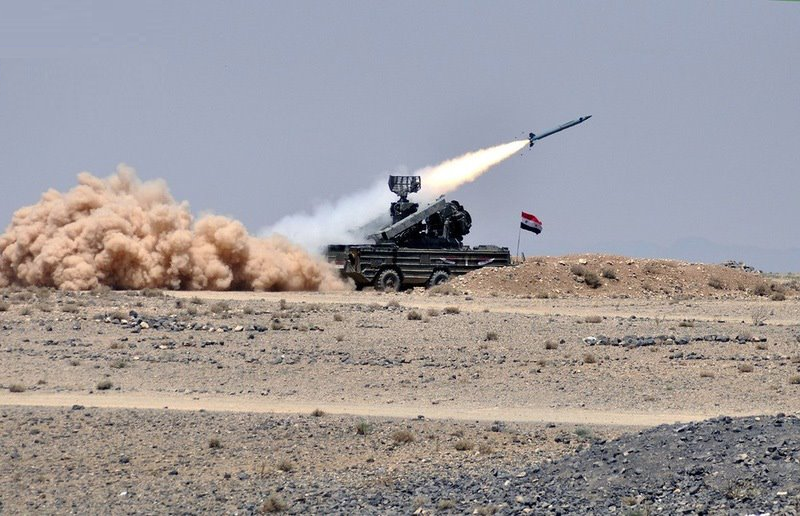
The 9K33 would see a much more successful career in Syrian service however, proving the Osa was indeed very much capable system when used in less hostile environments. Syria received its first 9K33 Osas in early 1982, all being of the 9K33M2 ‘Osa-AK’ variant, lacking the characteristic IFF (identification friend or foe) antenna seen on the improved 9K33M3 ‘Osa-AKM’ variant. These systems were quickly pressed into service for deployment to Lebanon’s Bekaa Valley during the Lebanon War, where they were responsible for the downing of an Israeli Air Force F-4E Phantom II and a U.S. Navy LTV A-7E Corsair II fighter-bomber.
The 9K33M2 Osa-AK’s 9M33M2 missiles have a range of up to 10 kilometers, after which its 19kg warhead either detonates by its proximity fuze or by command of the TELAR’s crew. An electro-optical tracking system is also present on the vehicle in case of electronic countermeasures jamming the 9K33’s radar. In Syrian service, this system was replaced with an infrared (IR) tracking system from an unknown source during the early to mid-2000s. This modification also included the installment of new electronics within the 9A33B launcher itself. The new IR tracking device can be seen installed on the TELAR below. A new display, the screen through which the operators follow the missile’s trajectory towards its target, can also be seen. This display has so far featured prominently in every video published by Jaish al-Islam, and is often the only evidence to see if a target has been hit.
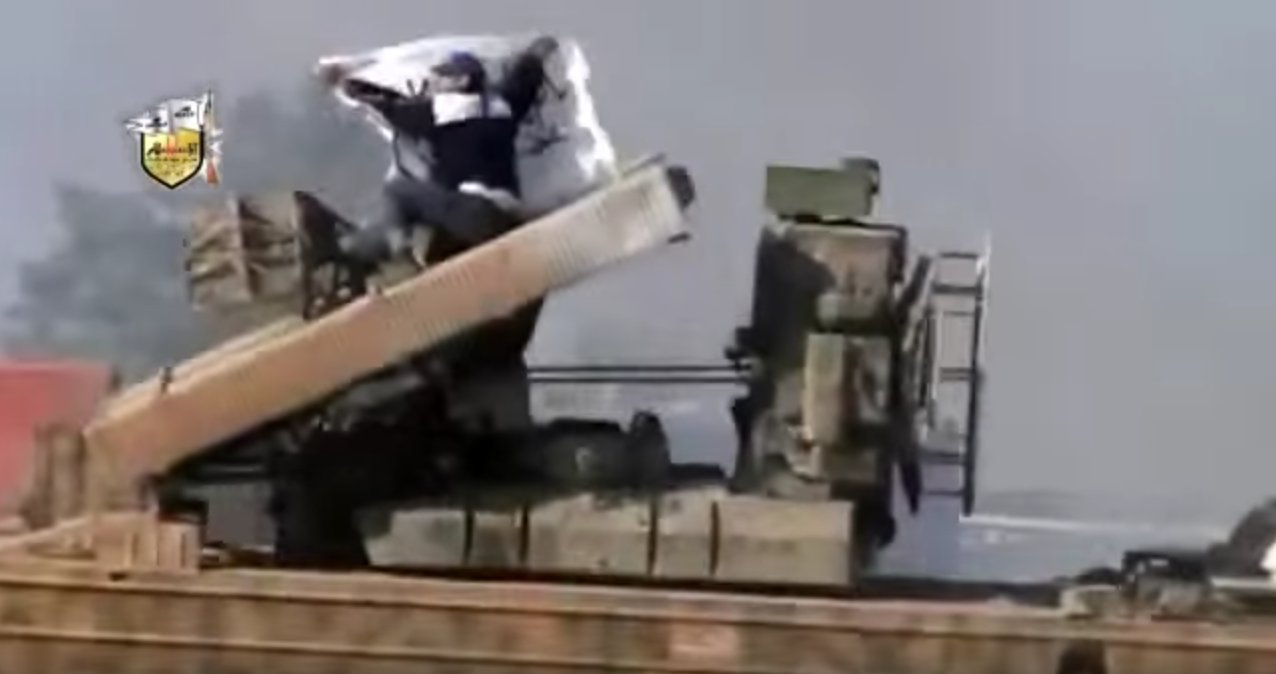

Syria’s 9K33 Osas would however prove far less successful against Israeli Air Force raids into Syria, the number of which rapidly increased in the past years. These strikes, mainly targeted at weapon depots around Damascus, have so far met with little resistance from Syria due to heavy use of electronic countermeasures by Israel. In fact, even Syria’s brand-new Buk-M2s, Pantsir-S1s and Pechora 2Ms have so far proved incapable of intercepting and shooting down Israeli aircraft.
During the course of the Syrian Civil War, the SyAADF’s operational capabilites would quickly diminish, eventually leading to the de facto disbandment of the once proud Syrian Air Defense Force. Although newly acquired systems such as the Buk-M2, Pantsir-S1 and Pechora 2M remain active, much of the other surface-to-air missile sites were abandoned with its equipment stored or simply left to rot. The 9K33s fared no better, with most batteries being deactivated and it systems placed in storage. As a result, most of the seven previously active 9K33 sites (six located around Damascus, one in Burj Islam) are now empty.
An Israeli airstrike carried out on the 2nd of February 2013, supposedly targeting Buk-M2s about to cross the border with Lebanon to be delivered to Hizbullah, saw the destruction of three 9K33 Osa-AKs instead. It is likely that Israel was afraid that the deployment of these launchers so close to the Lebanese border could indicate a possible transfer of these systems to Hizbullah in Lebanon. While it certainly seemed like a plausible scenario, the targeted 9K33 Osas actually arrived to this location after evacuation from their previous site. Although a transfer to Hizbullah was thus not meant to happen, the targeting does show the intelligence capabilities and a subsequent quick reaction from the Israeli side.
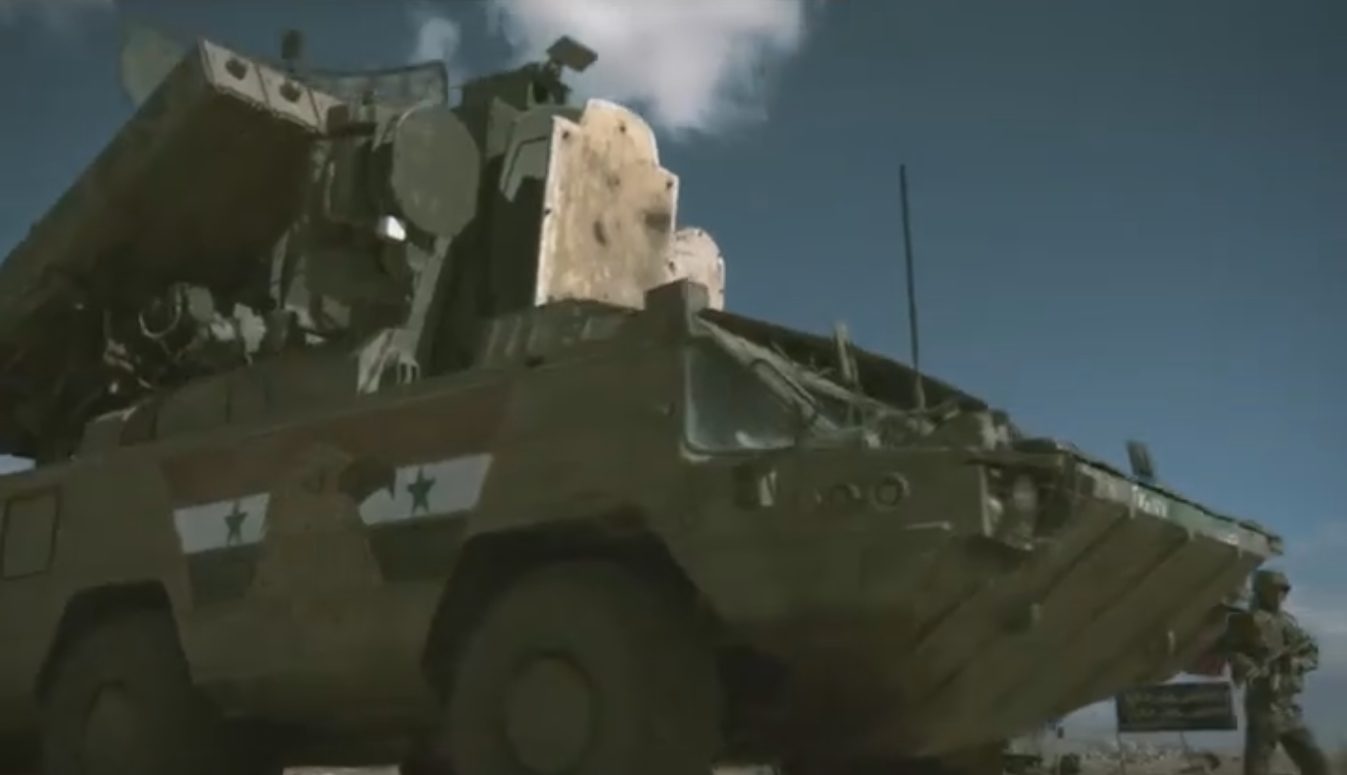
Back to the 5th of October 2012, when fighters of Jaish al-Islam began an operation in Eastern Ghouta’s countryside aimed at clearing two major air defence positions of regime presence. These positions comprised a S-125 surface-to-air missile site and a weapons storage depot for surface-to-air missiles. Only poorly defended, both sites quickly fell in the hands of Jaish al-Islam. Months before, an isolated Syrian Arab Air Defense Force 9K33 battery located here, was ordered to relocate to the larger and thus more secure S-125 site just under three kilometers away, located here. This battery arrived on its new location on 1st of August 2012, comprising 9K33 Osa ‘275195’, ‘275196’ and ‘275197’, 9T217BM ‘275189’ and another unknown serial, a BTR-60PU-12 command vehicle and several trucks carrying personnel and associated equipment. The fourth 9K33 Osa launcher ‘275198’ had previously been damaged by gunfire and would not be transferred to the S-125 site. ‘275198’ was instead driven to a SyAADF maintenance and storage complex located inbetween Marj as-Sultan and Deir Salman.
After arriving at its new location, ‘275195’, ‘275196’ and ‘275197’ were stationed in the many bunkers littering the complex. Although all three remained intact, this move meant the end of the operational status of the battery, and the TELARs would remain in their bunker until their capture by Jaish al-Islam on the 6th of October. The move to relocate the 9K33 Osas to a more safe location thus proved to be entirely futile. In hindsight, only the evacuation of all SyAADF assets from Eastern Ghouta would have prevented Jaish al-Islam from capturing large amounts of air defence equipment.
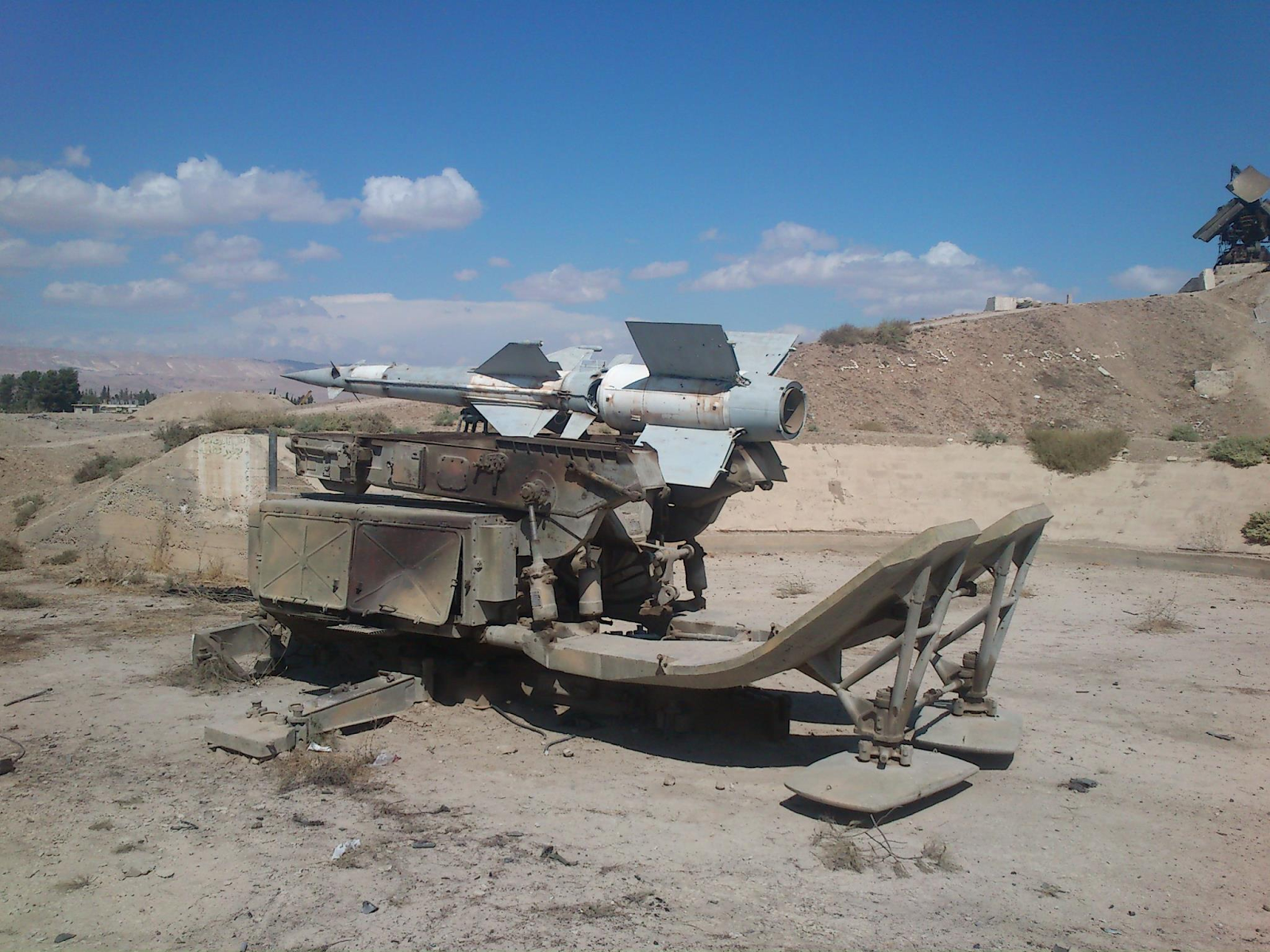
Before opposition fighters captured the S-125 site, now also including the 9K33 battery, the whole site was subject to a barrage of small arms fire, which set fire to several vehicles and damaging some of the air defence equipment. The 9K33s remained in the site’s storage bunkers however, and thus escaped unharmed. Footage showing 9K33 ‘275196’ being driven out of its shelter was the first glimpse of what exactly the opposition fighters had captured.
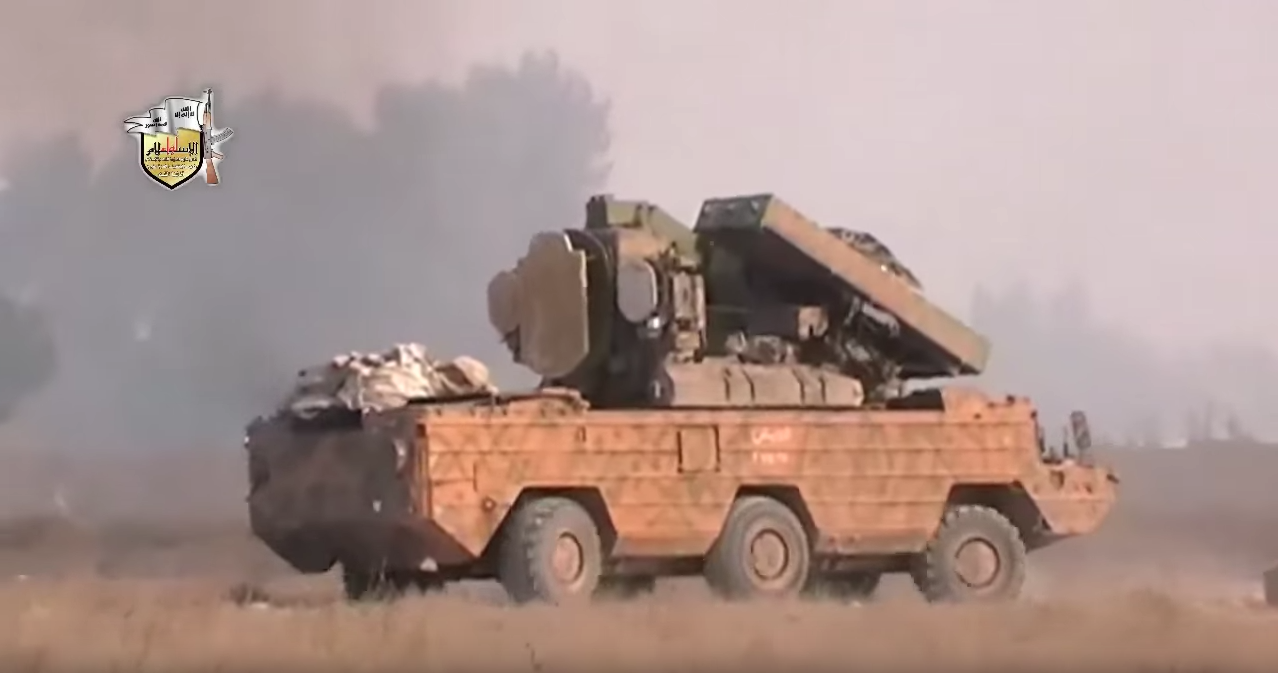
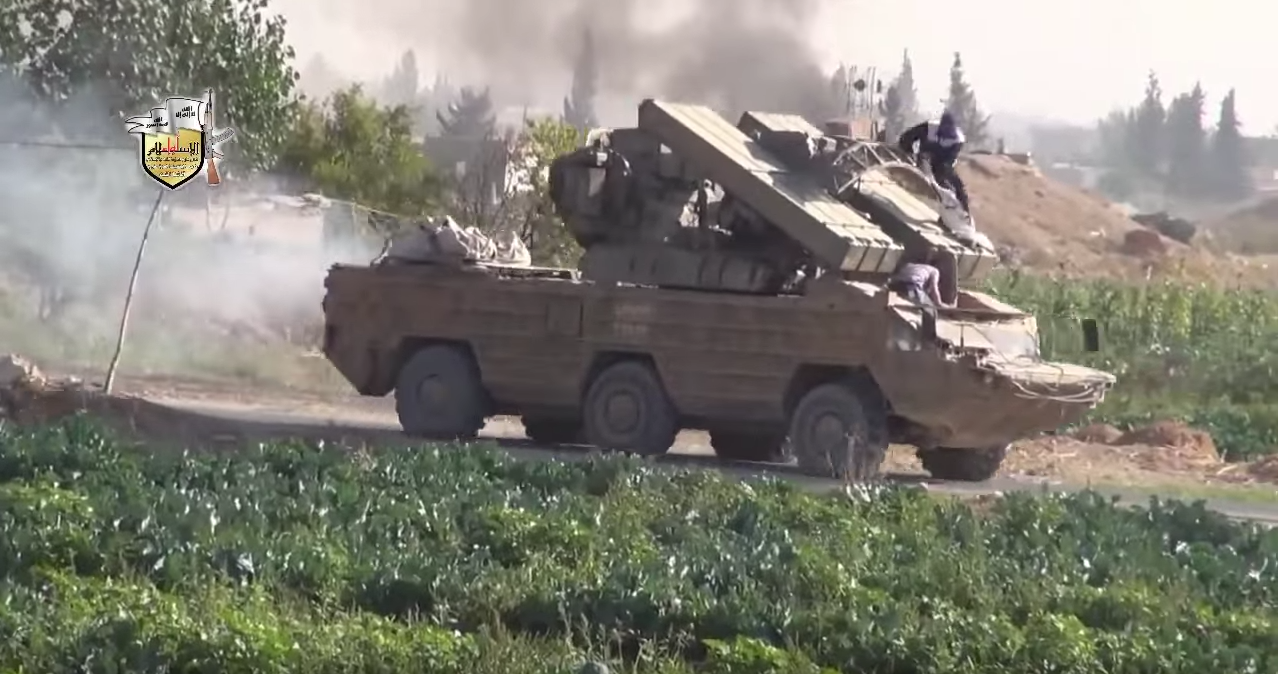
The footage of opposition fighters on 9K33 ‘275196’ already revealed the presence of a second example, which was 9K33 ‘275197’ (in the background on the second image). Images of the third 9K33 ‘275195’ would only be posted on social media, thus evading sighting by the general public. The whole site, including the S-125s and associated equipment were moved away from the location they were captured afterwards in order to avoid destruction by possible artillery fire or airstrikes by the Syrian Arab Air Force. The site was then converted to farmland for agricultural use.
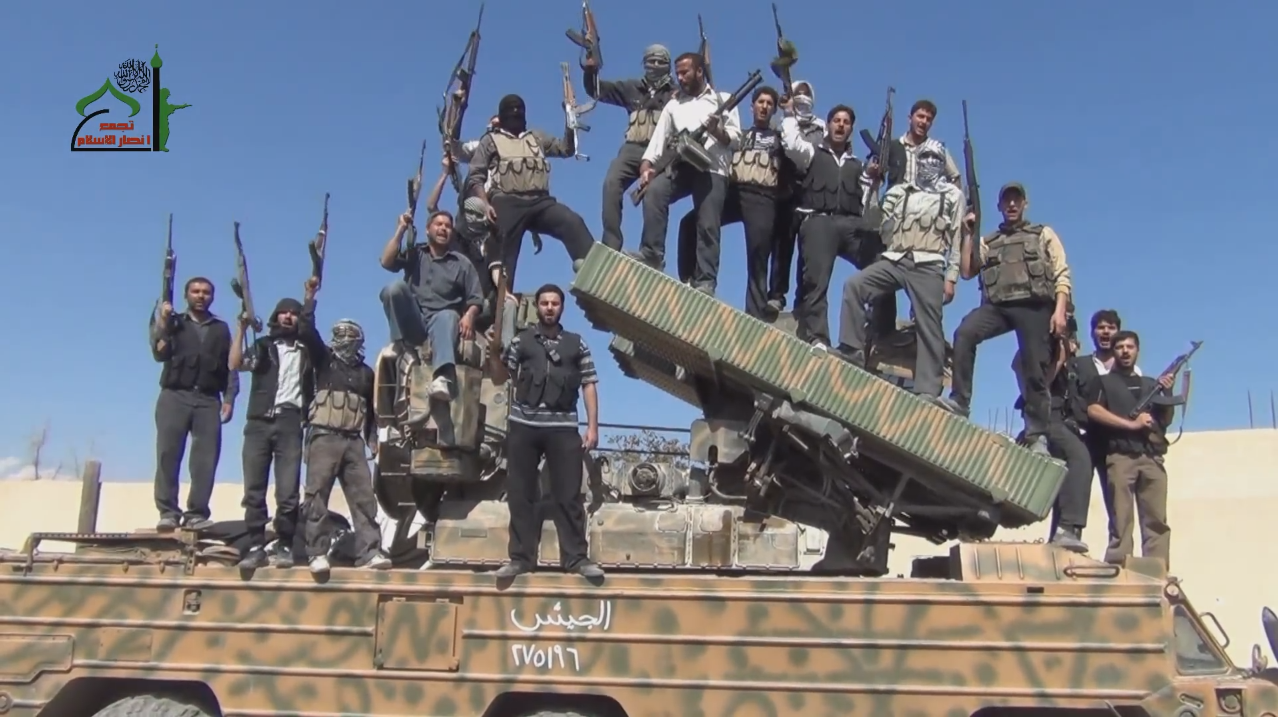
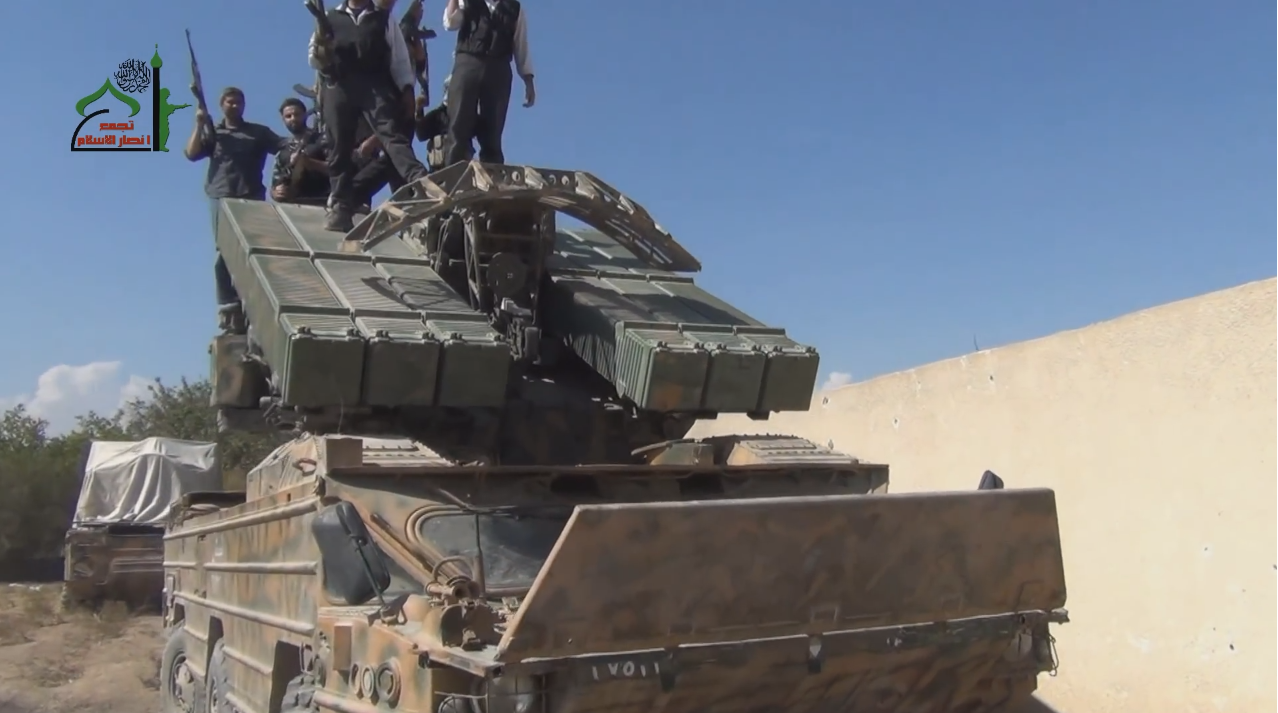
Also found at the site were the burning remains of one of the two 9T217BMs stationed here. This vehicle was likely hit by Jaish al-Islam during the assault on the base, resulting in its destruction. Located further away from the site was the battery’s second 9T217BM loader, which although captured intact and moved away, was later set on fire and also destroyed.
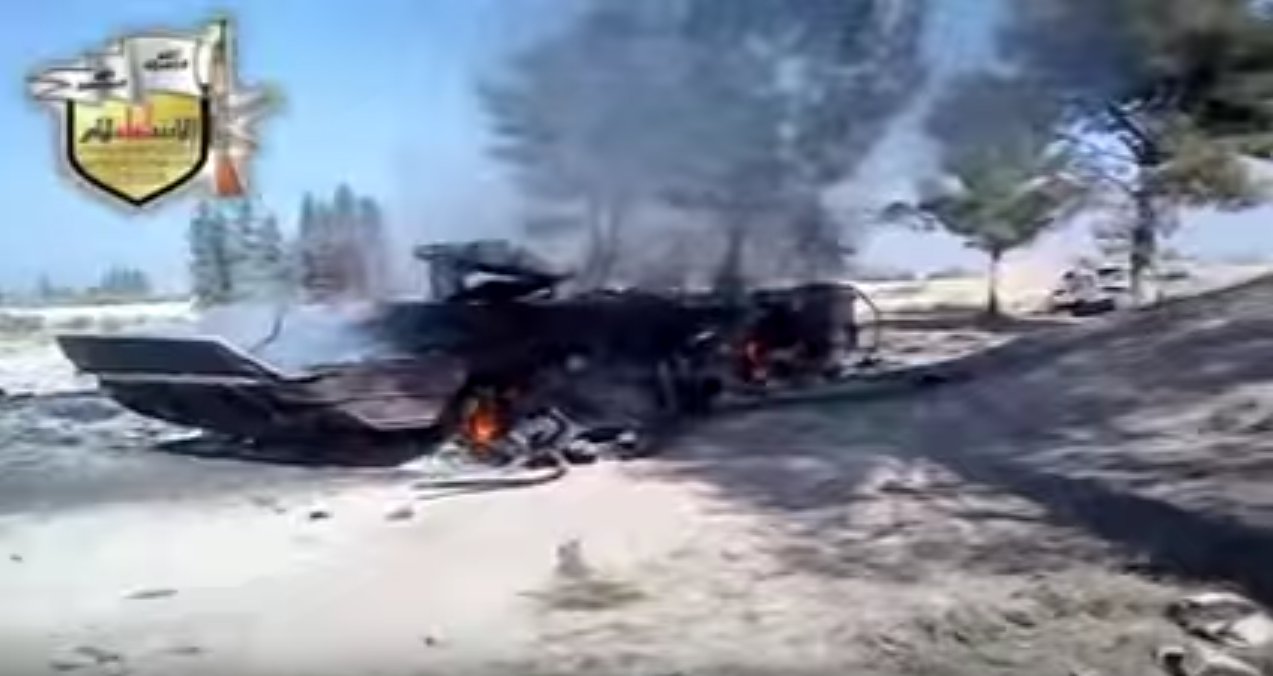
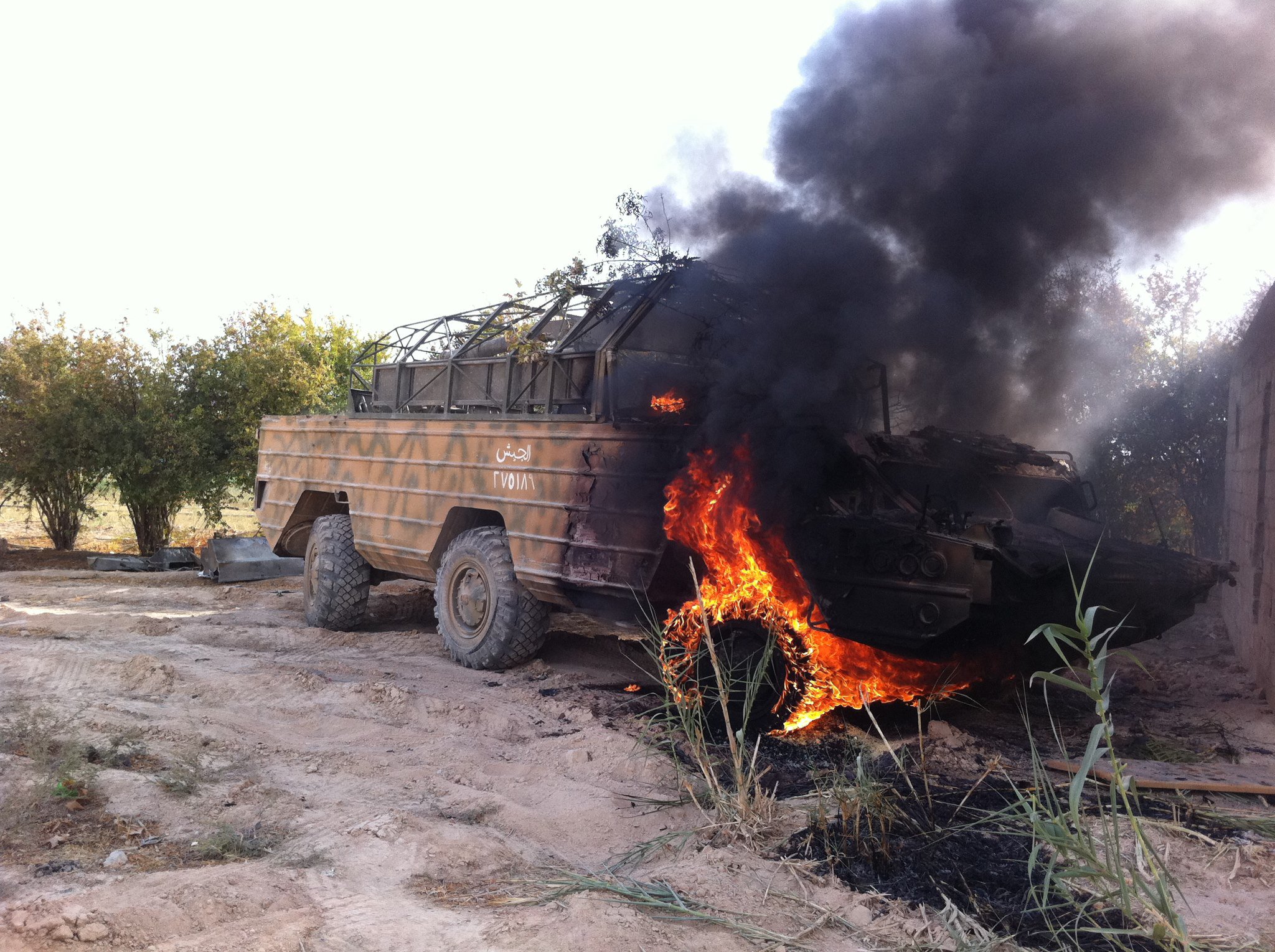
On the 25th of November 2012, rebels captured a SyAADF maintenance and storage complex located next to Marj al-Sultan heliport. Amongst the equipment found here were not only dozens of trucks, armoured fighting vehicles, tools and training aids, but also two more 9K33 Osas, comprising ‘275198’ and another example with an unknown serial. Both had previously been hit by rebel fire, causing several bullet holes in the engagement and tracking antennas of one vehicle, while the other suffered a fire which also damaged the engagement and tracking antennas, effectively rendering both examples useless for future use. It is believed that one of the examples was previously stationed at the site where Jaish al-Islam captured its three examples, only to be captured less than two months later in a different location.

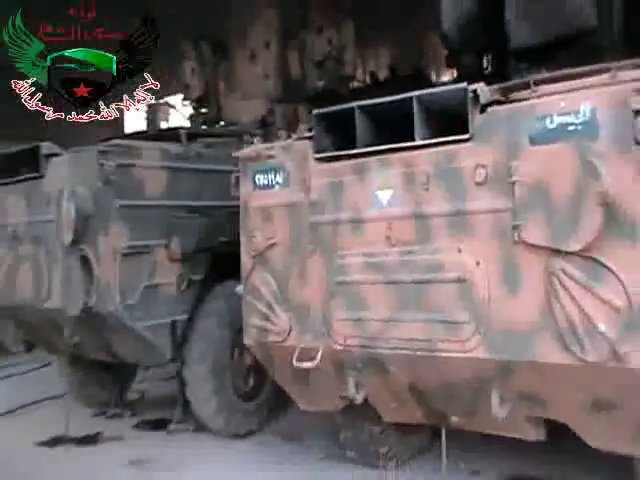
When opposition fighters overran a maintenance and storage complex located near Harasta al-Qantara in the same month, they would not only capture dozens of trucks and command vehicles, but also another 9T217BM loader ‘270405’. Although it was aside from minor damage still relatively intact, the 9T217BM had no missiles onboard and was thus practically useless. The eventual fate of the only intact 9T217BM remains unknown, but is unlikely to be in use with Jaish al-Islam.
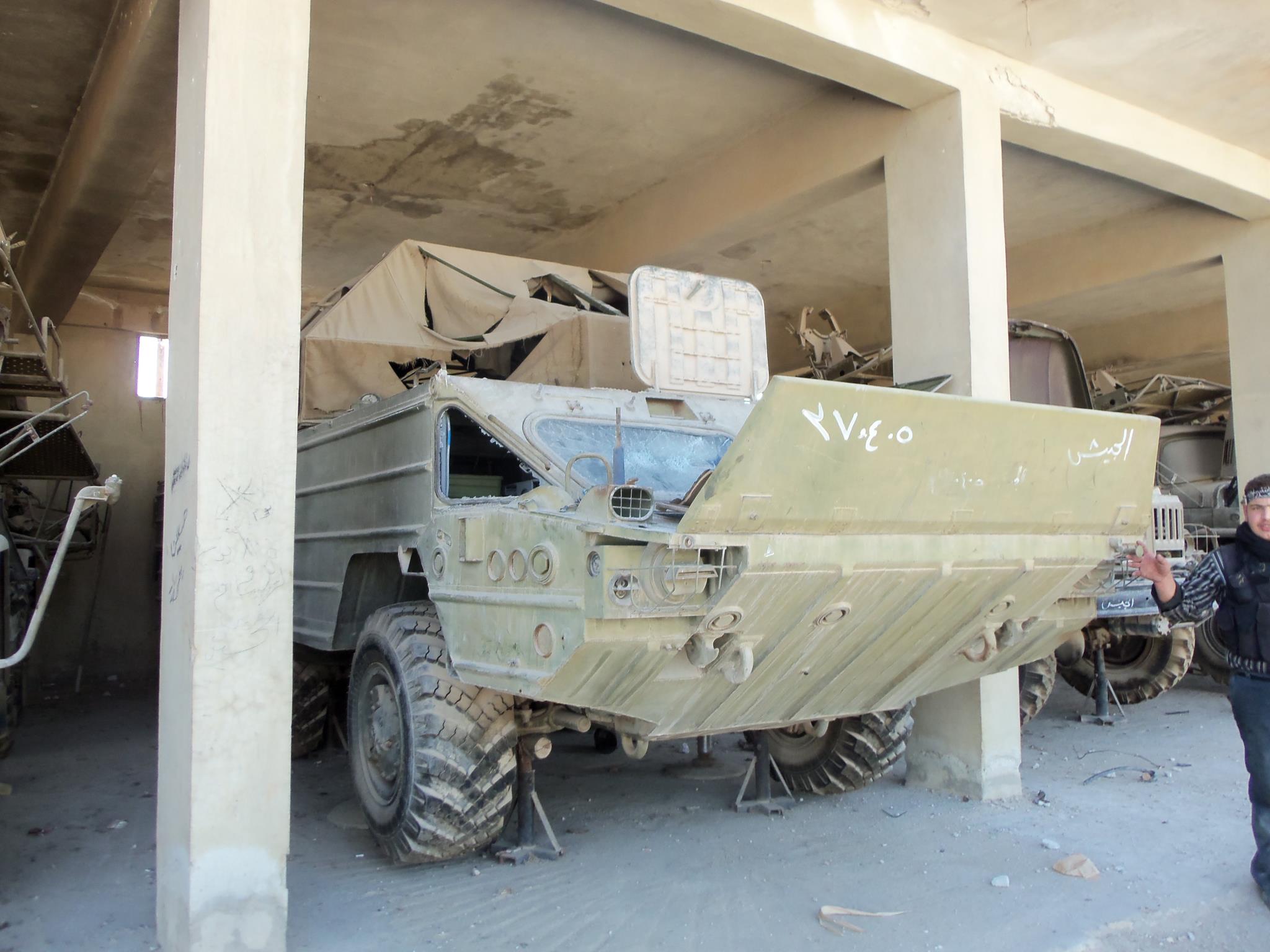
Altogether, opposition fighters in Eastern Ghouta had captured at least five 9K33 Osas and two 9T217BMs. Of these vehicles, only three 9K33 Osas would prove to be of any use for Jaish al-Islam. As it remains unclear if the transfer of the 9K33 Osa battery to their new location included the transfer of reloads, and if the six missiles of 9K33 Osa ‘275198’ were also encountered, the amount of 9M33 missiles captured by opposition fighters remains a topic of debate, and ranges from eighteen to forty-eight.
At least six of these missiles are confirmed to have been launched at SyAAF helicopters flying over Eastern Ghouta, resulting in the destruction of one Mi-17 and one Mi-8/17, and the damaging of another Mi-8/17, and a Mi-25. While additional launches and shootdowns are sometimes reported (and are indeed likely to concern this system), these events cannot be independently confirmed.
While allowing rebels to capture such sophisticated weaponry was a critical blunder, the complete absence of any efforts to track and destroy these systems shortly after their capture serves as a painful reminder of the incompetence of the regime’s military apparatus. When looking at the capture of dozens of weapon depots since, one can only come to the conclusion that little to no lessons have been learned from these repeated failures.
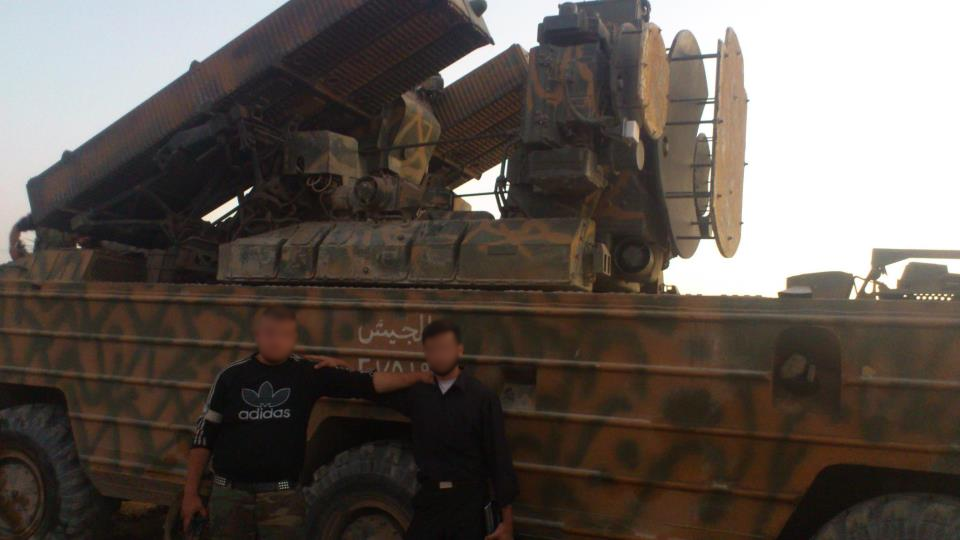
After their capture on the 5th of October 2012, it would take just under a year for Jaish al-Islam to employ the system for the first time, which occurred on the 29th of July 2013. This occasion saw the apparent downing of a Syrian Arab Air Force Mi-8/17, marking the beginning of a serious threat to SyAAF helicopters flying over or near Eastern Ghouta. A video showing the launch in the cover of the night, and subsequent downing can be seen here. The media department of Jaish al-Islam released a statement shortly after the downing of the helicopter.
”Joyful news circulated by social media pages today which is the news of the heroes of brigade of Islam using of air defense missile system batteries gained in one of the raids almost a year ago, during which they worked unremitting efforts to decipher the codes of the system and run it, and after many attempts and insistence of the operators of the project to continue till they achieve the success they hoped for after many engineers failed to decode its codes till God graced them to try it yesterday at the Battle of mills which the regime tried to retrieve desperately after it was dominated by the Mujahideen so the Mujahideen of Brigade of Islam shot down a helicopter by the Russian-made OSSA system resulted in the death of two colonels and an officer on board of the helicopter.”
The press release confirmed that significant problems had been encountered in turning the 9K33 Osa system from a sophsticated surface-to-air missile system to an operational system that could actually be used by Jaish al-Islam, and hinted that none of the operators had previous experience on the system. Although it is certainly possible that its operators mastered the system by learning-by-doing, the presence of former 9K33 operators within the ranks of Jaish al-Islam should not be ruled out however.

Another launch was documented in the weeks or months that followed, though the actual date remains unknown. Despire the fact that the missile exploded in the vicinity or likely even hit its intended target, the extent of damage or if it crashed was not reported. From the first launch onwards, it would take another six months before a new launch was officially revealed, although additional launches (in addition to the one mentioned above) in the meantime cannot be ruled out. This launch resulted in the destruction of the targeted Mi-17, footage of the launch can be seen here. Occurring during broad daylight on the 16th of January 2014, a single 9M33 missile found its way to just above the helicopter and exploded, resulting in the loss of both its rotors and tailboom. Dramatic footage of the Mi-17 tumbling to the ground was caught on tape in Darayya, and once again confirmed that the threat of Jaish al-Islam’s 9K33 Osas was still very much alive.
A video of another 9K33 Osa launch was uploaded on the 18th of January 2014, just days after the previous launch. Although the outcome of this launch is unclear due to the obstruction of several houses and trees, it is believed that the 9M33 missile missed its intended target and self-destructed 25-28 seconds after launch at the edge of its range.
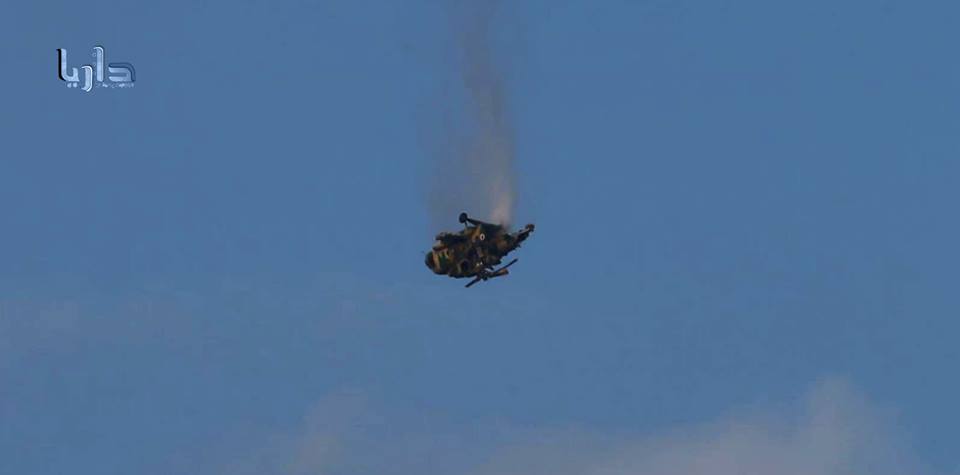
The number of launches and the dates on which they occur became extremely difficult to track after the latest launch on the 18th of January 2014. While no videos showing additional launches are believed to have been uploaded shortly after, Jaish al-Islam subsequently released a video in March showing all past launches, including two which were previously unknown (this included the launch mentioned above). The other event saw the launch of a single missile against a Mi-8/17. Although exploding in the proximity of the helicopter, the footage stops directly after the explosion, making it likely the 9M33 missile only damaged the helicopter.
The video released by Jaish al-Islam also revealed the use of the 9K33’s radar by Jaish al-Islam, which further aids in the detection range of the surface-to-air missile system. Although such usage seems logical, it increases the chances of detection and possibily destruction by the Syrian Arab Air Force. This particular launcher is shown with a full load of six missiles, including one empty canister.

The same video also shows one of the launchers, fitted with new headlights, driving through Eastern Ghouta in full daylight, a testimony to the lack of aerial surveillance over this part of the country. The presence of members of the much feared Air Force Intelligence in Eastern Ghouta is incredibly likely, and was likely responsible for the airstrike that killed Jaish al-Islam’s previous leader Zahran Alloush. The group responsible for operating the 9K33 Osas is believed to be small however, and by refraining from accepting new members it is thus practically impregnable.

The 18th of January 2014 launch would be the last documented use of the 9K33s for over two years. While it is possible additional launches indeed occurred in the meantime, no statement or video was released by Jaish al-Islam during this period, hinting at a possible hiatus of more than two years. The absence of the 9K33 Osa led to wild rumours that the systems had finally been destroyed, or that Jaish al-Islam had run out of missiles for them.
Others used this oddity to claim foreign states had delivered additional 9M33 missiles to Eastern Ghouta, or that at least one system was moved from Ghouta to Eastern Qalamoun to target aircraft flying in the vicinity of Seen airbase, where the SyAAF’s MiG-29SMs and some of the Su-24MK2s are currently based. Many of the crashes in this area were subsequently attributed to a 9K33 supposedly operating here, most of which were debunked as technical faults later however. None of these rumours can be confirmed, and are thought to be unlikely.
With no missiles confirmed to have been fired for more than two years, it does raise the question whether Jaish al-Islam is willing to constantly harass Syrian Arab Air Force helicopters flying over Eastern Ghouta. Indeed, from this point on it began to increasingly look like Jaish al-Islam was using the assets it captured mainly as a deterrent rather than utilising their full potential in the Civil War.
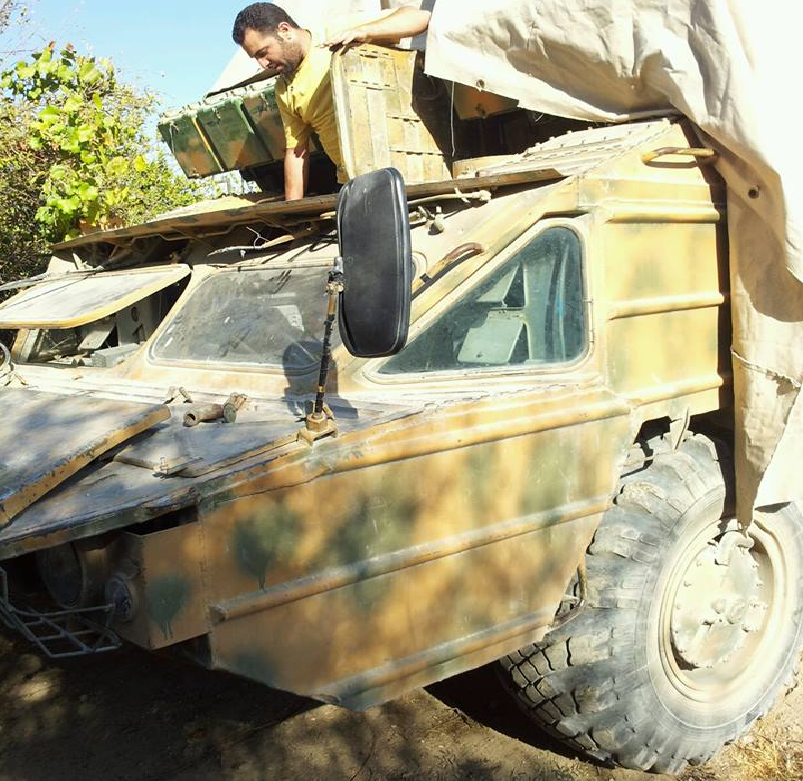
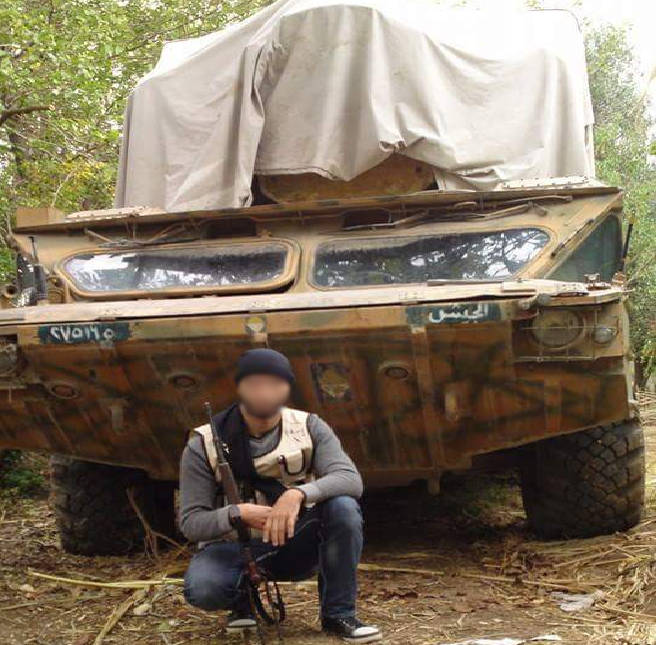
While the territory Jaish al-Islam controls has significantly shrinked over the past few years, this has yet to pose a problem for the operations of the 9K33s. Although the location of the launchers is a well kept secret, with the launchers believed to have been stored at seperate locations throughout Eastern Ghouta, the approximate location of one 9K33 Osa has meanwhile been found. The launchers are operated by just one crew, still consisting of the same members that operated them shortly after their capture.
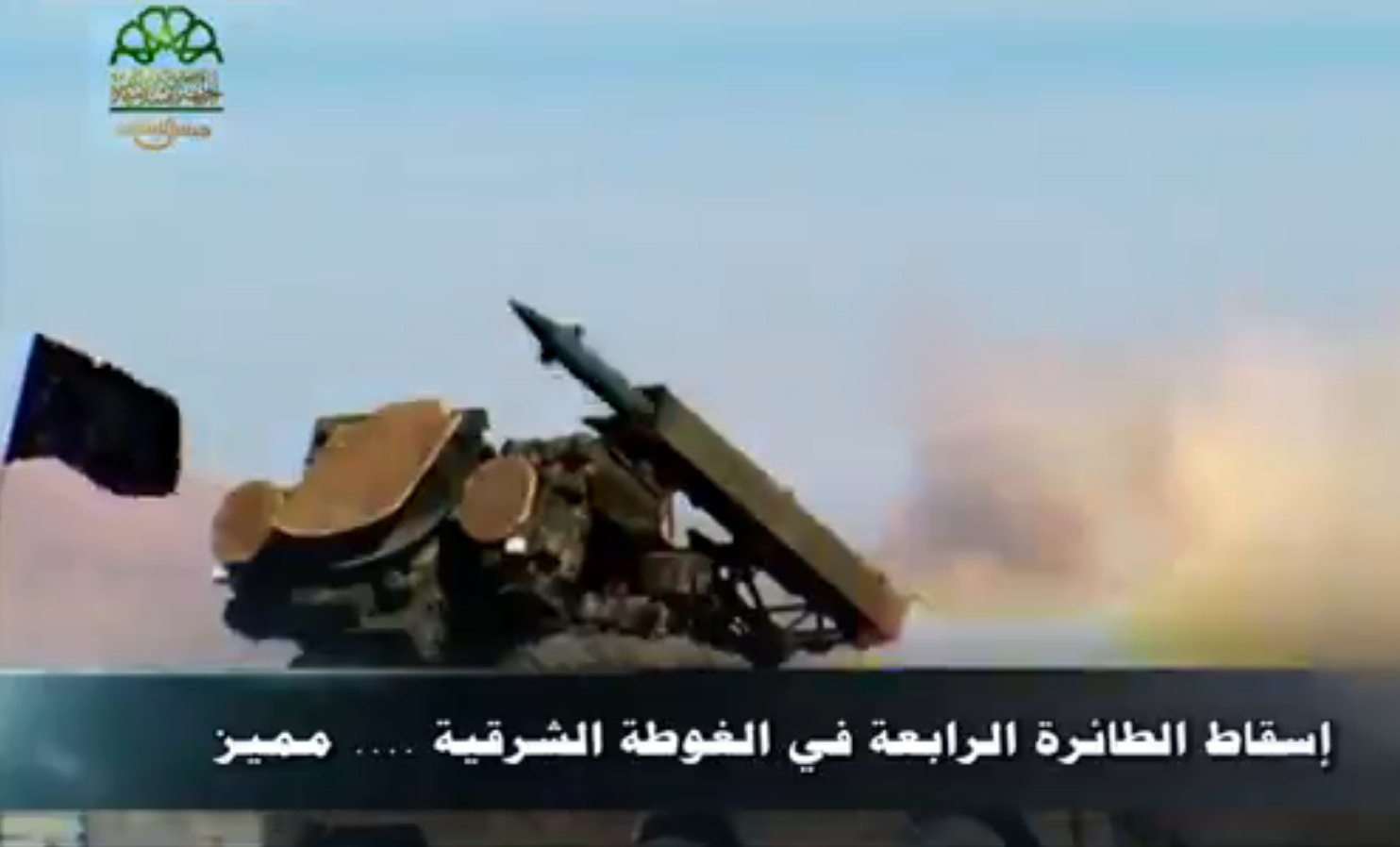
This crew surprised many when they were confirmed to be back in action once again on the 26th of June 2016. Although suffering heavy damage to its fuselage tailboom, the targeted Mi-25 managed to make an emergency landing at Damascus International Airport. While awaiting repair here, a Mi-8/17 carrying a reserve Mi-25 tailboom crashed not far from Damascus IAP, making it likely this tailboom was destined for the damaged Mi-25.

Whether this launch was an isolated event or will soon be followed up by subsequent strikes is unknown, but considering the 9K33’s past deployment the latter seems more likely. Whatever the case, it is clear the threat from these systems is anything but subdued. As such, they continue to threaten the skies of Eastern Ghouta, impeding the regime’s aerial operations in the area until they are taken out.
Special thanks to Morant Mathieu from Military in the Middle East.
